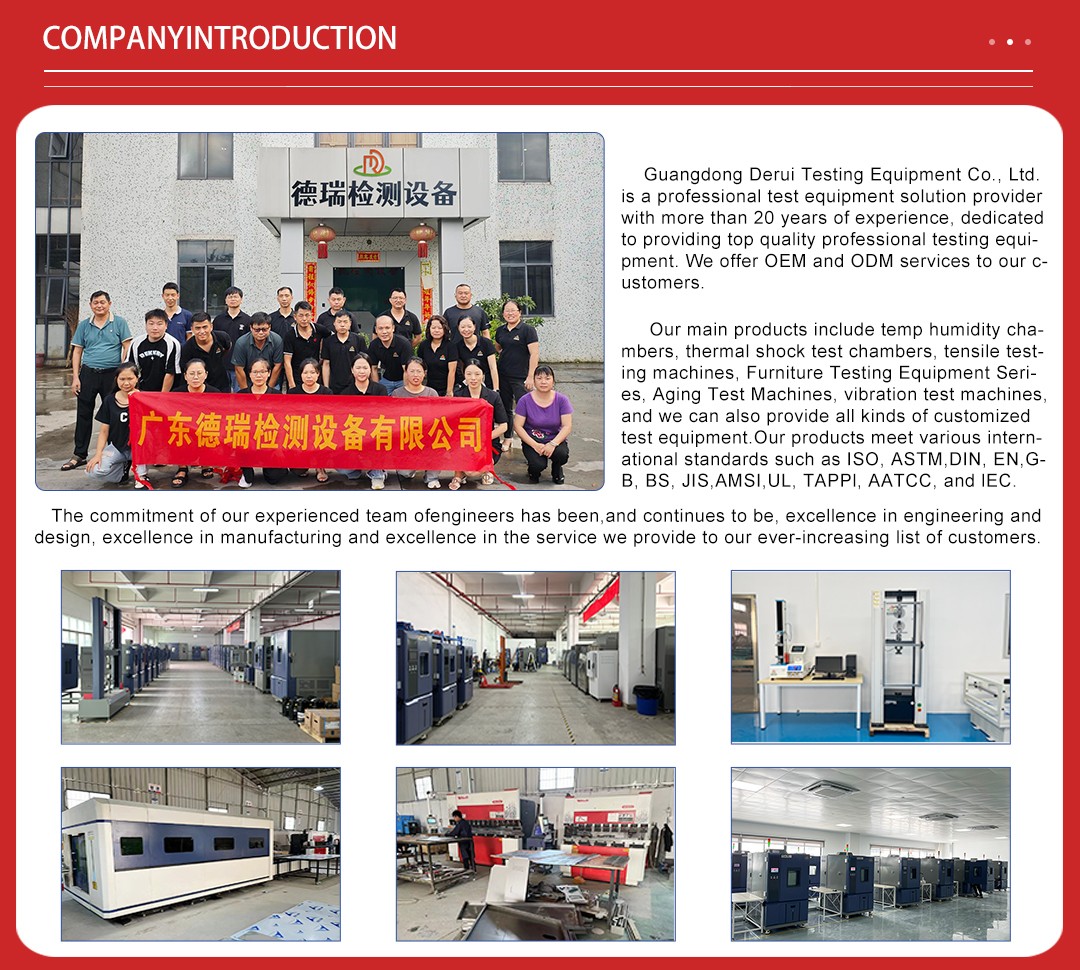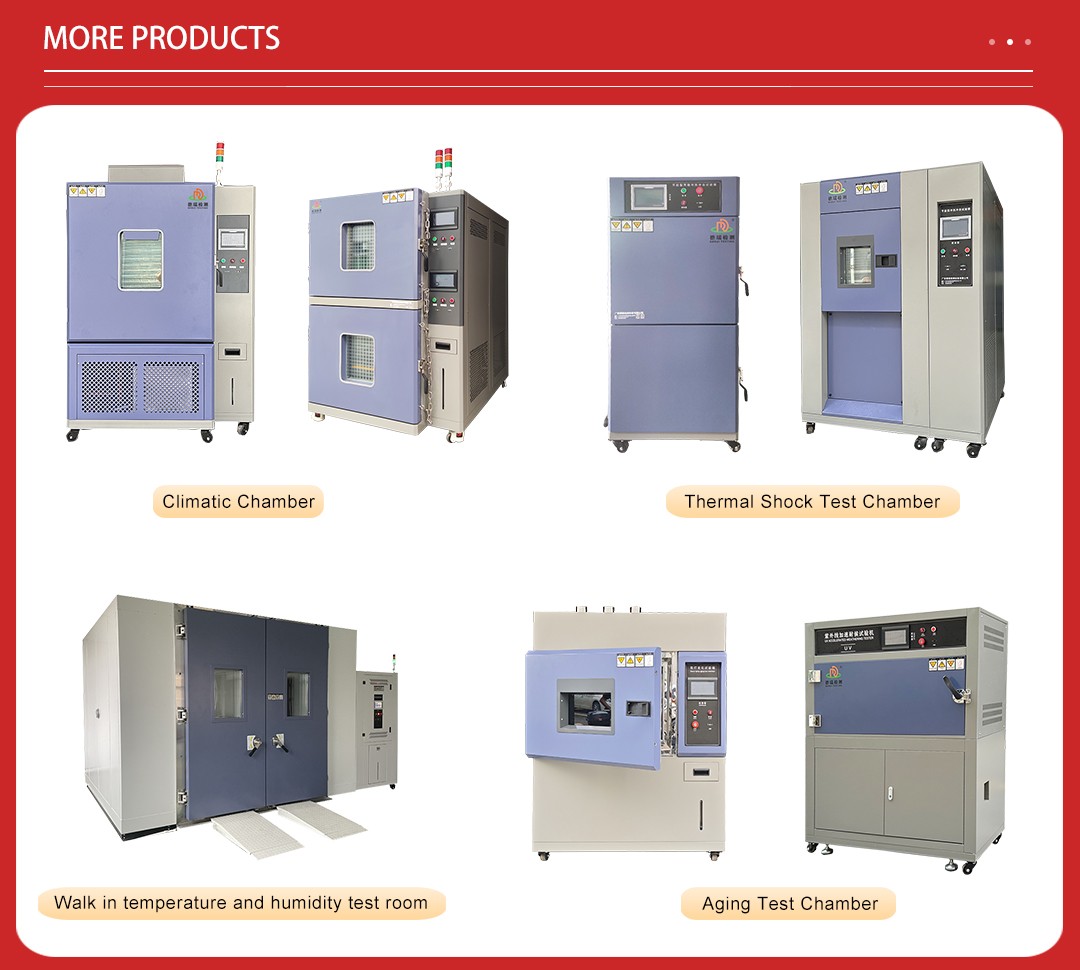
The Rapid Thermal Cycling Chamber for Battery Testing is specifically engineered to meet the stringent requirements of battery performance and durability assessments. Its design prioritizes robu ...

The Rapid Thermal Cycling Chamber for Battery Testing is specifically engineered to meet the stringent requirements of battery performance and durability assessments. Its design prioritizes robustness, precision, and adaptability to handle a wide range of battery types and sizes.

The rapid thermal cycling chamber is indispensable in various stages of battery development and validation:
- Research and Development (R&D): Assessing new battery chemistries, designs, and manufacturing processes to improve performance and longevity.
- Quality Assurance (QA): Ensuring that batteries meet specified performance and safety criteria before mass production.
- Failure Analysis: Investigating the root causes of battery failures observed in the field, aiding in the development of more reliable products.
- Compliance Testing: Verifying that batteries comply with industry standards and regulations, facilitating market entry and consumer trust.

To ensure reliability and repeatability, the rapid thermal cycling chamber adheres to several international standards, including:
- IEC 62660-2: Secondary lithium-ion cells for the propulsion of electric road vehicles – Part 2: Reliability and abuse testing.
- UL 1642: Standard for Lithium Batteries.
- ISO 12405-2: Electrically propelled road vehicles – Rechargeable energy storage system (RESS) – Part 2: Test methods for thermal stability.
- SAE J2464: Electric and Hybrid Electric Vehicle High Voltage Safety Requirements.

Structure and Design Characteristics
The Rapid Thermal Cycling Chamber for Battery Testing is specifically engineered to meet the stringent requirements of battery performance and durability assessments. Its design prioritizes robustness, precision, and adaptability to handle a wide range of battery types and sizes. Key structural features include:
- High-Strength Enclosure: Constructed from corrosion-resistant materials such as stainless steel, the chamber ensures long-term durability in harsh testing environments.
- Double-Wall Insulation: A well-insulated double-wall structure minimizes thermal transfer, maintaining precise temperature control and reducing energy consumption.
- Ergonomic Access: Equipped with a large, easy-to-operate access door and transparent viewing windows, the chamber allows for convenient loading and monitoring of batteries during tests.
- Integrated Safety Features: Advanced safety mechanisms, including over-temperature protection and emergency stop buttons, ensure operator safety and prevent damage to test specimens.
Performance and Technical Features
- Wide Temperature Range: Capable of operating from -40°C (-40°F) to +150°C (+302°F), this range is essential for simulating extreme environmental conditions that batteries may encounter.
- Ultra-Rapid Temperature Transition: With transition rates up to 30°C per minute, the chamber can rapidly cycle between temperatures, accurately replicating real-world thermal stresses.
- Precision Control: Utilizing advanced PID (Proportional-Integral-Derivative) controllers, the chamber maintains temperature and humidity levels with high accuracy, typically within ±0.5°C and ±2% RH.
- Humidity Management: For comprehensive testing, the chamber can generate relative humidity levels from 10% to 98%, enabling the assessment of battery performance in both dry and wet conditions.
- Data Acquisition Systems: Equipped with state-of-the-art data logging and monitoring systems, the chamber provides real-time tracking of temperature, humidity, and battery parameters, facilitating detailed post-test analysis.


Working Principle
The rapid thermal cycling chamber operates by subjecting batteries to a series of controlled temperature and humidity cycles, designed to simulate the thermal stresses encountered during their operational life. The process involves:
1. Initial Conditioning: The chamber heats or cools to a specified setpoint using electric heaters or refrigeration units, creating the desired initial environment.
2. Steady-State Exposure: Once the target temperature is reached, the battery is exposed to this environment for a predetermined duration, allowing it to stabilize.
3. Rapid Transition: The chamber then quickly transitions to the opposite extreme, either cooling or heating, depending on the initial state. This rapid change mimics the thermal shocks experienced in real-world applications.
4. Cycle Repetition: The temperature cycle repeats multiple times, ensuring that the battery undergoes extensive thermal stress testing.
5. Optional Humidity Cycles: For tests involving moisture, the chamber introduces steam to create a humid environment, assessing the battery's performance under wet conditions.
Application Cases
1. Electric Vehicles (EVs): Automakers use rapid thermal cycling chambers to evaluate the performance and lifespan of EV batteries under varying thermal conditions, crucial for developing safe and efficient electric vehicles.
2. Portable Electronics: Manufacturers test batteries for smartphones, laptops, and other portable devices to ensure they can withstand the thermal stresses encountered during daily use.
3. Renewable Energy Storage: Developers assess the durability and efficiency of stationary battery systems used in renewable energy storage applications, ensuring reliable power supply in diverse climates.
4. Aerospace and Defense: Organizations evaluate batteries for use in aerospace and defense applications, where extreme temperatures and rapid thermal changes are common, ensuring mission-critical reliability.
In conclusion, the Rapid Thermal Cycling Chamber for Battery Testing is a critical tool for ensuring the quality, safety, and reliability of batteries across various industries. Its advanced design, precise control, and adherence to industry standards make it an essential asset in the development of cutting-edge battery technologies.


Not search wanted products